Most people think of acid-reducing medications like omeprazole or famotidine as harmless heartburn remedies. But what many don’t realize is that these drugs can quietly sabotage the effectiveness of other medications you’re taking - sometimes with serious consequences.
How Acid Reducers Change Your Body’s Chemistry
Proton pump inhibitors (PPIs) and H2 blockers work by lowering stomach acid. That’s their job. But stomach acid isn’t just there to digest food - it’s a key player in how your body absorbs many medicines. When you take a PPI like omeprazole, your stomach pH can rise from its normal level of 1-3.5 up to 5 or even 6. H2 blockers like ranitidine do the same, but less dramatically. This shift sounds small, but it changes everything for certain drugs. Most oral medications are either weak acids or weak bases. Weak bases - like atazanavir, dasatinib, and ketoconazole - need acid to dissolve properly. In a low-acid environment, they stay locked in an insoluble form and never get absorbed. The result? The drug doesn’t enter your bloodstream. It just passes through. One study found that when atazanavir (an HIV drug) was taken with a PPI, its absorption dropped by up to 95%. That’s not a minor dip - it’s a complete treatment failure. Viral load can spike, resistance can develop, and the patient’s health can crash.The Real Culprits: What Drugs Are Most at Risk?
Not all drugs are affected the same way. The FDA lists 15 high-risk medications that clearly interact with acid reducers. Here are the most common ones:- Atazanavir - HIV treatment. PPIs can reduce absorption by 74-95%. Never combine with PPIs.
- Dasatinib - leukemia drug. Absorption drops by 60%. Dose adjustments are needed.
- Ketoconazole - antifungal. Absorption falls by 75%. Often becomes useless.
- Itraconazole - another antifungal. Requires stomach acid to dissolve.
- Erlotinib - lung cancer drug. Absorption drops significantly with PPIs.
- Mycophenolate mofetil - transplant drug. Reduced absorption increases rejection risk.
Why It’s Not Just About the Stomach
You might think, “But most drugs are absorbed in the small intestine, not the stomach.” That’s true. About 90% of absorption happens there. But dissolution - the first step - starts in the stomach. If a weak base doesn’t dissolve properly in the stomach, it won’t break apart enough to be absorbed later. Think of it like a pill that never melts. Even if it reaches the intestine, it stays intact and passes out unchanged. Enteric-coated pills make it worse. These are designed to survive stomach acid and dissolve in the intestine. But if acid is suppressed, they can dissolve too early - in the stomach - and get destroyed by enzymes or cause irritation.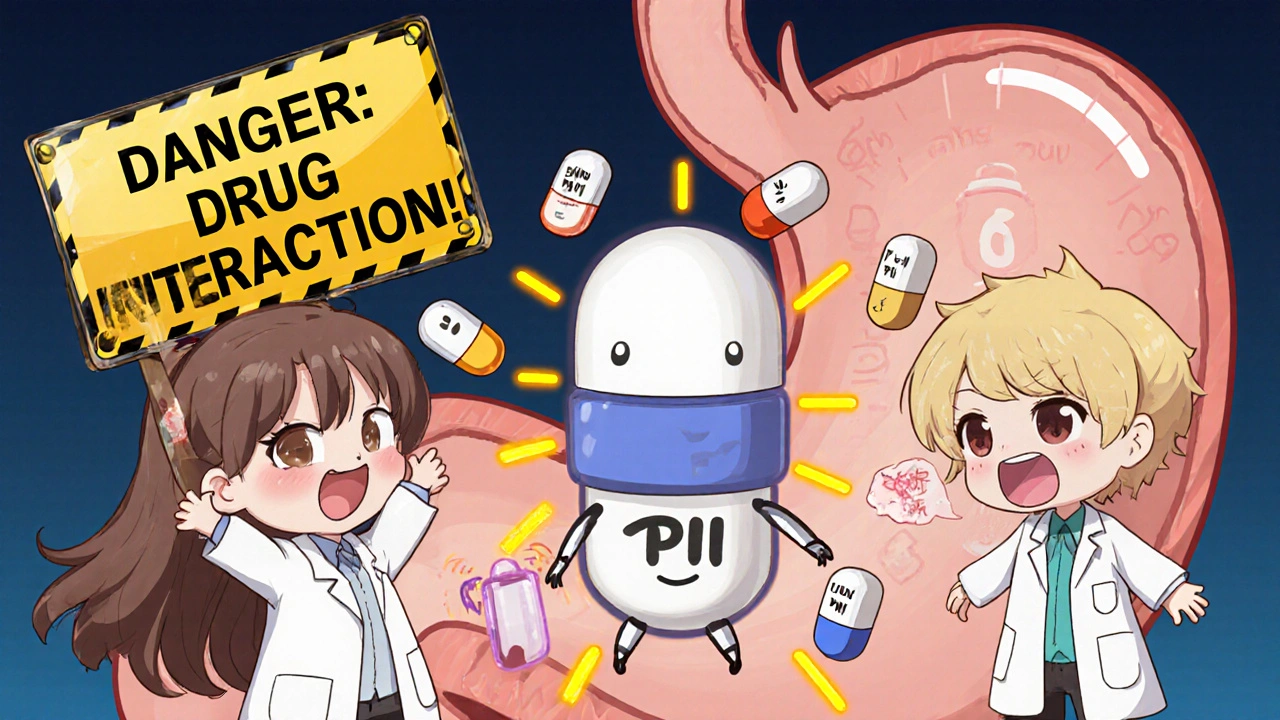
PPIs vs. H2 Blockers: Not All Acid Reducers Are Equal
Not all acid reducers are created equal when it comes to drug interactions. PPIs like omeprazole, esomeprazole, and pantoprazole suppress acid for 14-18 hours a day. They’re powerful and long-lasting. That’s why they’re so effective for GERD - but also why they’re so dangerous with other drugs. H2 blockers like famotidine or ranitidine only work for 8-12 hours. Their effect is shorter and less intense. Studies show they reduce drug absorption by 20-40%, while PPIs knock it down by 40-80%. That doesn’t mean H2 blockers are safe. If you’re on atazanavir or dasatinib, even famotidine can cause trouble. But if you must use an acid reducer and can’t avoid it, H2 blockers are the lesser evil - and even then, timing matters.What You Can Do: Practical Strategies
If you’re on one of these high-risk drugs and need an acid reducer, here’s what actually works:- Don’t combine them. The safest move is to avoid PPIs entirely if you’re on atazanavir, dasatinib, or ketoconazole. Talk to your doctor about alternatives.
- Stagger the timing. If you must take both, take the affected drug at least 2 hours before the acid reducer. This gives the weak base time to dissolve before acid suppression kicks in. It doesn’t eliminate the risk, but it can reduce it by 30-40%.
- Use antacids instead. Tums or Maalox can be used, but only if taken 2-4 hours apart from your other meds. They work fast and wear off fast - so timing is critical.
- Ask for a different drug. Some HIV medications, like raltegravir or dolutegravir, don’t interact with PPIs. Ask your doctor if switching is an option.
- Check your pharmacy label. Many pharmacies now flag these interactions. If you see a warning, don’t ignore it.
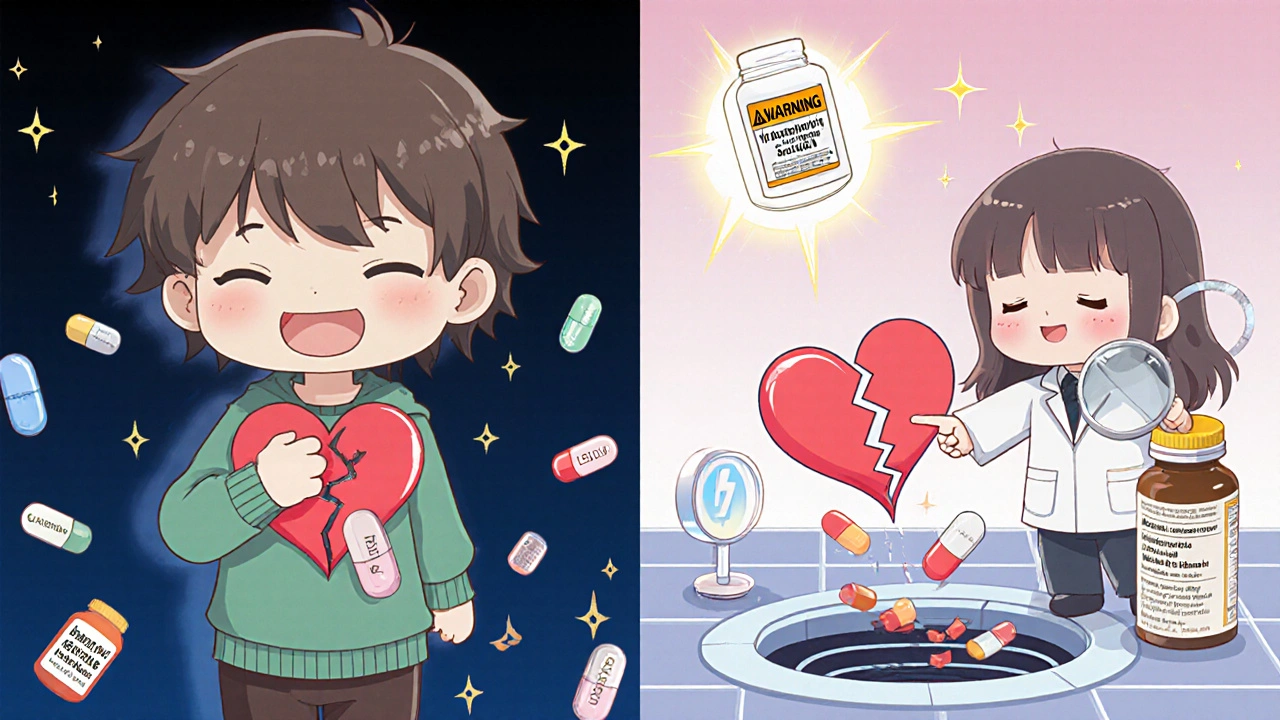
The Bigger Picture: Why This Keeps Happening
About 15% of adults in the U.S. and UK take PPIs long-term - often without a clear reason. Many are on them for years, even though guidelines say most people only need them for 4-8 weeks. The FDA estimates that 15,000-20,000 therapeutic failures each year in the U.S. are directly tied to unnecessary PPI use. That’s people with HIV, cancer, or autoimmune diseases failing treatment because their heartburn pill was never questioned. It’s not just about one pill. It’s about how we prescribe. A 2024 study found that when electronic health records showed a warning about a PPI-dasatinib interaction, doctors changed their prescribing 78% of the time. That’s progress. But 22% still ignored it. And the cost? The U.S. spends $1.2 billion a year treating complications from these interactions - drugs that didn’t work, hospitalizations, repeat tests, and failed therapies.What’s Changing Now
The tide is turning. The FDA now requires 28 drug labels to warn about acid-reducing interactions - up from just 12 five years ago. New drugs in development are being designed to avoid pH-dependent absorption entirely. Nearly 37% of new molecular entities now use alternative delivery systems to bypass stomach acid. AI tools are emerging too. Google Health’s prototype can predict interaction risks with 89% accuracy. Future clinics may use real-time gastric pH monitoring to personalize dosing. But until then, the responsibility falls on you and your care team. If you’re on a medication for HIV, cancer, or a chronic condition - and you’re taking an acid reducer - ask this question: Is this combination safe? Don’t wait for a warning label. Don’t assume it’s harmless. Ask your pharmacist. Ask your doctor. Bring up the interaction. It could mean the difference between control and collapse.Frequently Asked Questions
Can I take antacids with my acid-reducing medication?
Antacids like Tums or Rolaids can be used alongside PPIs or H2 blockers, but only if you space them out by 2-4 hours. Antacids work quickly but don’t last long, so timing is key. Taking them too close to your other meds can still interfere with absorption. Always check with your pharmacist before combining them.
Do all PPIs have the same interaction risk?
Most PPIs - omeprazole, esomeprazole, lansoprazole, pantoprazole, and rabeprazole - have similar effects on stomach pH and carry comparable interaction risks. Some, like rabeprazole, may have slightly less impact, but the difference isn’t enough to rely on. If you’re on a high-risk drug like atazanavir, avoid all PPIs.
What if I accidentally took a PPI with my HIV meds?
If you took a PPI with atazanavir or another high-risk drug, contact your doctor or pharmacist right away. Don’t stop your HIV meds - but do get your viral load checked. One user on Reddit reported his viral load jumped from undetectable to over 12,000 copies/mL after starting omeprazole. That’s not rare. Early detection can prevent resistance.
Are there any acid reducers that don’t interfere with drugs?
There are no acid reducers that are completely safe with all drugs. But some newer medications - like certain HIV drugs (raltegravir, dolutegravir) or cancer drugs (osimertinib) - are designed to work regardless of stomach pH. If you’re on a chronic medication, ask your doctor if there’s a pH-independent alternative available.
How do I know if my drug is affected?
Check the drug’s prescribing information for warnings about “gastric pH,” “acid reducers,” or “PPIs.” If you’re unsure, ask your pharmacist to run a drug interaction check. Drugs with a narrow therapeutic index - where small changes in dose cause big effects - are most at risk. If your drug is for HIV, cancer, or transplant rejection, assume it’s affected unless proven otherwise.

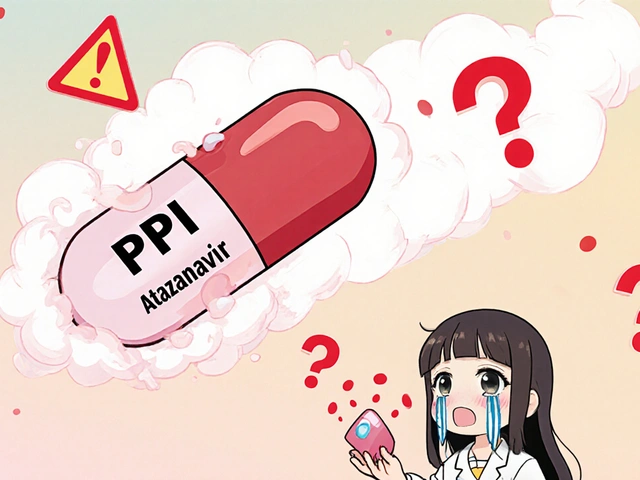

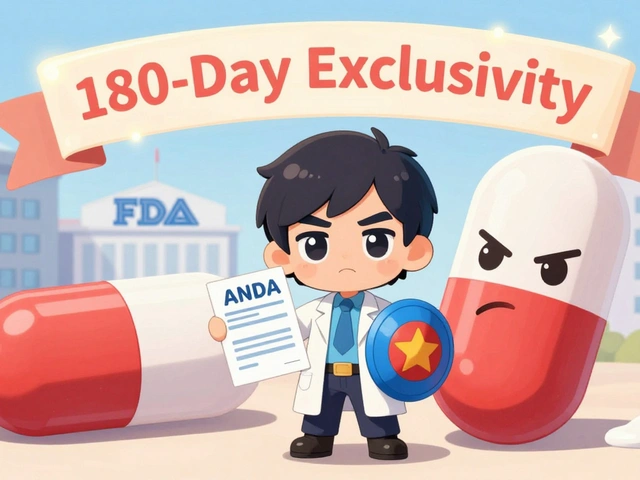

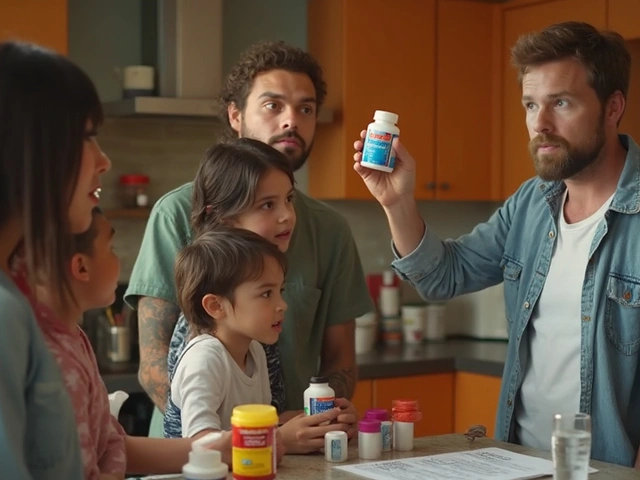

Ryan Anderson
November 14, 2025 AT 23:08Wow, I had no idea my omeprazole could be sabotaging my meds. I’ve been on it for years for heartburn and just assumed it was harmless. This is terrifying. Thanks for laying it out so clearly. I’m calling my pharmacist first thing tomorrow. 🙏💊
Eleanora Keene
November 16, 2025 AT 07:33This is one of those posts that makes you pause and think. I’m a nurse, and I’ve seen patients with HIV go from undetectable to viral spikes because they started taking PPIs without knowing. It’s not just about the science-it’s about communication. We need better warnings on labels, and we need doctors to ask about OTC meds every time. 💪
Joe Goodrow
November 17, 2025 AT 23:33USA needs to stop letting Big Pharma sell these drugs like candy. You can’t just hand out PPIs like gum at a checkout. We’ve got people on these for years with zero oversight. This isn’t medicine-it’s corporate negligence. Fix the system, not just the labels.
Don Ablett
November 18, 2025 AT 13:51The pharmacokinetic implications of gastric pH modulation on weak base absorption are profound and underappreciated in clinical practice. The dissolution threshold for drugs such as atazanavir is highly pH-sensitive, and even minor deviations from optimal gastric acidity can result in subtherapeutic plasma concentrations. This phenomenon is well documented in the literature since at least 2012 yet remains underutilized in patient education.
Kevin Wagner
November 19, 2025 AT 06:43THIS IS A MASSIVE PUBLIC HEALTH ISSUE. I’ve got a cousin on dasatinib who was on omeprazole for ‘just a little heartburn’-turned out he had a 90% drop in drug levels. His oncologist didn’t even ask about OTC meds. We need a national campaign. T-shirts. Billboards. TikTok videos. Someone’s life could literally depend on this info. Let’s make it go viral before someone dies because they thought Tums was safe.
gent wood
November 20, 2025 AT 05:59Thank you for this. I’ve been taking famotidine for years, and I didn’t realize even that could interfere. I’m on myophenolate after my transplant, and I’ve been lucky so far. But now I’m going to ask my team if I can switch to antacids on a schedule. I’ve never thought to question it. You’ve given me the courage to speak up.
Dilip Patel
November 20, 2025 AT 14:59India dont have this problem because we dont use these fancy pills. We use ginger tea and lemon water. All this western medicine is overcomplicating things. Your body dont need acid reducers. You just need to stop eating junk food. Why are you paying 500 dollars for a pill when you can fix it with food? This is why america is sick.
Jane Johnson
November 22, 2025 AT 00:57Actually, the FDA’s data on therapeutic failures is statistically questionable. The sample sizes are often skewed toward elderly populations with polypharmacy. It’s possible that comorbidities, not the PPIs, are responsible for the observed outcomes. A more rigorous analysis is warranted before inciting panic.
Peter Aultman
November 22, 2025 AT 08:40Man I used to take omeprazole every day like it was a vitamin. Now I read this and I’m like… whoa. I’m on a blood pressure med, but I think I’m good? Still gonna check with my doc. Good reminder that even ‘safe’ stuff ain’t always safe.
Sean Hwang
November 23, 2025 AT 07:06Just got my meds last week and I’m on ketoconazole. I had no clue. My pharmacist flagged it yesterday and I freaked out. I switched to Tums and take my meds 2 hours before. So simple. Why doesn’t everyone know this? Thanks for the post.
Barry Sanders
November 24, 2025 AT 16:08Another fearmongering post from someone who doesn’t understand pharmacology. The real issue? People are lazy. Don’t take the pill if you don’t need it. Stop blaming the medicine. Blame the person who took it without reading the label. Also, why are you on a PPI for 10 years? You’re the problem.
Chris Ashley
November 25, 2025 AT 11:34Wait so if I take my HIV meds at night and my PPI in the morning is that okay? I’ve been doing that for months…
kshitij pandey
November 26, 2025 AT 05:42Thank you for sharing this. In India, many people don’t even know what a PPI is. I’ve started sharing this with my family and friends who are on long-term meds. Knowledge is power. Let’s spread awareness-this could save lives. 🙏